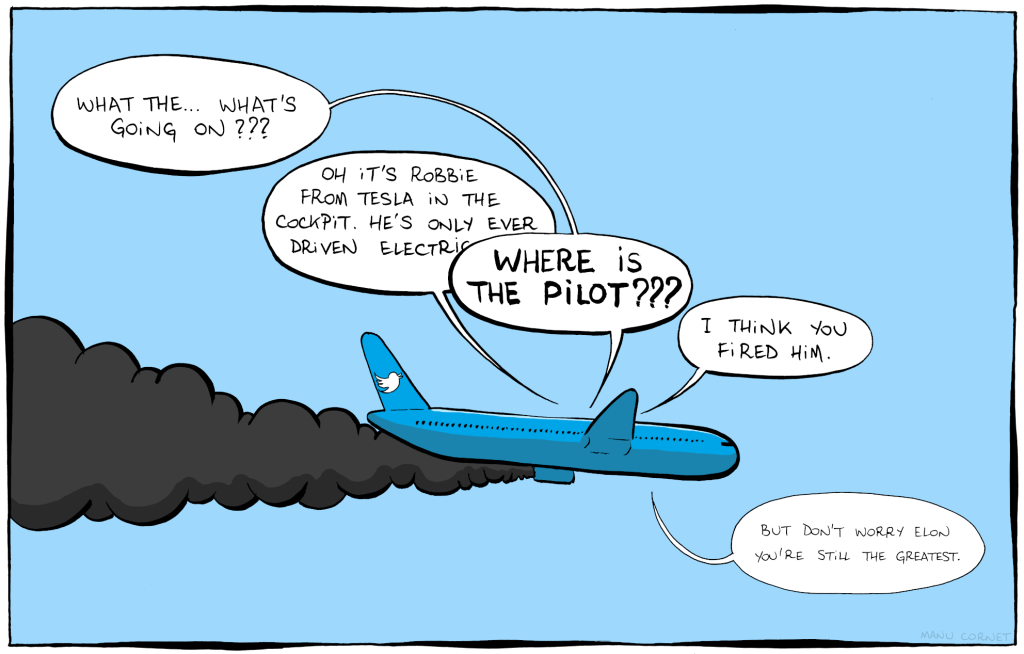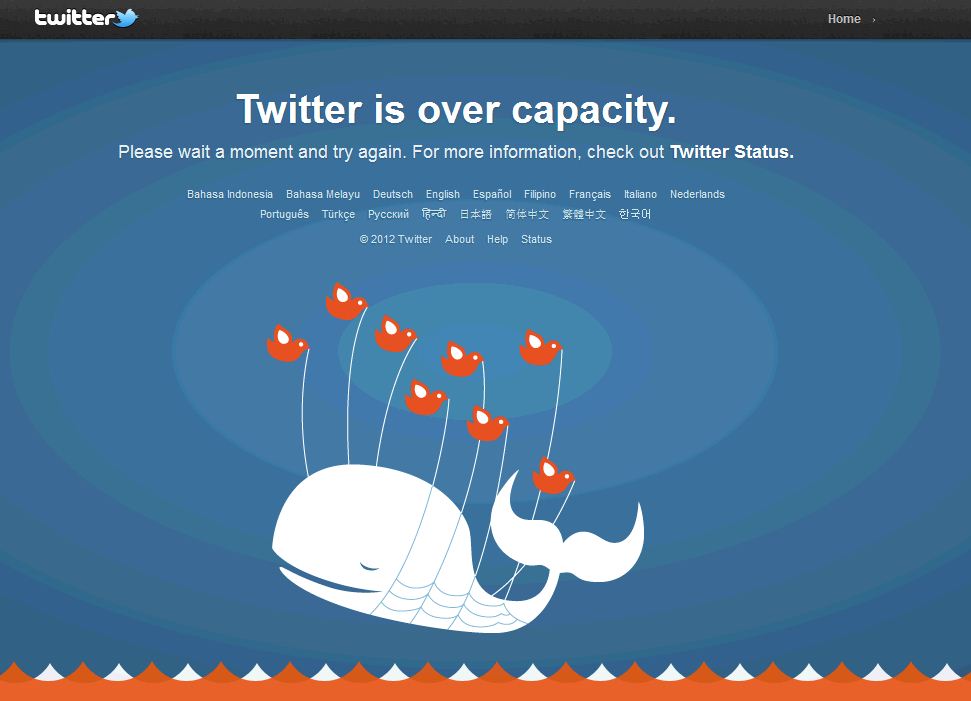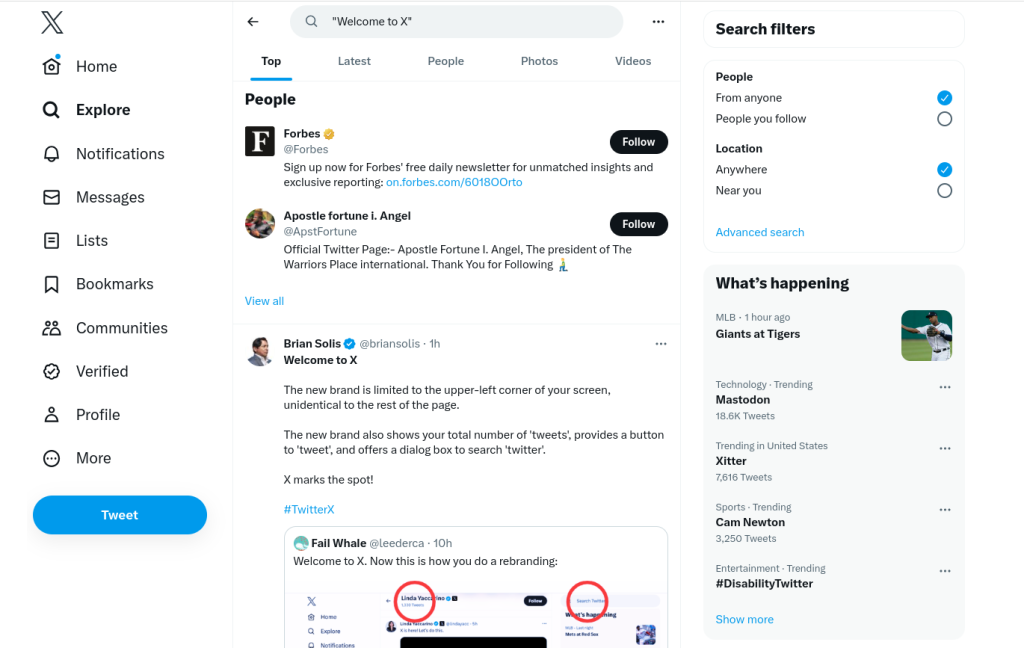Analyzing Twitter’s Evolution: BM to AM
Cheryl Lawson
Discussing Twitter is a necessity, even if its demise seems imminent. The platform’s significance in communication, news sharing and societal movements since its establishment remains noteworthy. Essentially, we should analyze it during two eras: before Elon Musk (BM) and after his acquisition (AM).
Presently viewed as a colossal disaster under Musk’s ownership, Twitter’s integrity has suffered. Launching with mass firings of developers and alienating advertisers to the point where major companies retracted their support–despite not being an optimal advertising choice compared to Facebook, Instagram or Google–Twitter was still patronized due to its large audience base.
Musk intended for Twitter users to freely voice their opinions without censorship despite his controversial business tactics leading many to dub the situation as a “dumpster fire.” Though you can interact with acquaintances on the platform, engaging becomes more challenging due primarily to bots proliferating hate speech and explicit content.
The decline in active users is evident; most only log in occasionally for mentions or event interactions via sponsors that maintain accounts there. However, sustaining such activity increasingly becomes burdensome.

However, to appreciate Twitter’s true potential, we need to look back to the era before Musk. This was a time when Twitter’s original purpose, as encapsulated by co-founder Biz Stone, was at its purest.
In a series of captivating anecdotes from Twitter co-founder Biz Stone at the Cannes Lions 2009, the birth, growth, and global impact of Twitter are traced. Born out of the inspirations from simplicity and ease of communication present in platforms like AOL Instant Messenger, Twitter grew into a real-time communication network, facilitating an intriguing sense of connection among users. Initially, the allure of Twitter was the real-time updates, as mundane as they may be, lending an intriguing peek into the lives of others.
A remarkable example includes a tweet from Stone announcing a pub change that led to the new pub reaching its capacity within 10 minutes. This showcased Twitter’s ability to facilitate group coordination in real-time, akin to a flock of birds moving as a single unit. This potential was also visible when Twitter’s presence at a festival created a buzz and brought people together.
Twitter’s potential extended beyond casual coordination, manifesting in profound impacts on journalism and activism. One example saw a man in Egypt using Twitter to document protests, demonstrating how social media could capture and spread significant moments globally. Furthermore, a single-word tweet even managed to secure legal assistance for someone in trouble, exemplifying Twitter’s potential to affect real-world change.
The platform itself, however, wasn’t just about technology but also about the triumph of humanity. As seen in instances where Twitter was used to coordinate efforts during wildfires, gas shortages, breaking news events, and natural disasters, the platform proved to be a facilitator for collective human action.
The notion of collective action is further strengthened by Twitter’s open network and ecosystem, fostering growth and diversification on a global scale. By opening its infrastructure to developers, Twitter sparked the creation of over 11,000 registered applications that generate three times the traffic of twitter.com itself. This approach allowed Twitter to tap into the power of billions of mobile and internet users globally, creating a potentially impactful and unpredictable open network.
On the commercial side, Twitter has proven to be a valuable tool for businesses, leading to increased revenue and customer engagement. Brands used Twitter for customer service, monitoring customer complaints and providing immediate responses. Even small businesses could stay connected with local customers without incurring substantial costs, by using Twitter for marketing and customer service.
Stone’s recounting of Twitter’s history not only presents the platform as a means of communication and information sharing but also as an instrument of global connectivity and collective action. The ability for businesses to leverage this platform for commercial gain is significant, but equally, if not more important, is the potential of Twitter, or any social media platform, to address complex global challenges by fostering a culture of collaboration, openness, and interoperability.
on a personal note:
On a personal note, I am deeply saddened by Twitter’s dramatic decline since Musk acquired the company in October 2022. Twitter was my favorite social network, primarily because of the conversations and connections it facilitated. I fondly recall receiving an email from then-Senator Barack Obama, inviting me to join him on this new platform. It was a thrilling era, seeing politicians and news outlets begin to leverage the power of social media.
In 2009/10, Jeff Pulver initiated the 140 conference (named after Twitter’s character limit at the time), bringing together enthusiasts who recognized Twitter’s potential to connect the world. This inspired me to launch the SMTULSA Conference to unite social media enthusiasts in my own region.
Twitter changed the trajectory of my career/personal brand.
- My dog’s Twitter account @imajackrussell brought me speaking gigs, and sponsorships
- I created and sustained the annual SMTULSA Conference for 10 years & it all started with Twitter.
Today, my visits to Twitter are limited to learning about new AI tools and receiving local weather updates through the #okwx hashtag, which remains invaluable for Oklahoma residents. However, the majority of my time is now spent on platforms like TikTok, YouTube, and as of yesterday, (July 2023) Instagram’s new Twitter competitor, Threads. We’ll delve into the rise of these emerging social platforms later, but for now, it’s a solemn farewell to the Twitter we once knew.
The good old days were when the worst thing that happened on Twitter was the ‘fail whale’.

Enough with the nostalgia about Twitter. It’s probably evident from my reminiscing that it held a special place in my heart during the BM era. However, let’s shift our focus back to the present. If you’re considering Twitter as a part of your brand or project’s social media strategy, I have a couple of valuable exercises to help you learn how to effectively leverage the platform.
Exercise
Exercise 1: Live Tweet a YouTube Video
Objective: To enhance your ability to create compelling, real-time content and learn how to incorporate relevant hashtags effectively.
Steps:
- Choose an interesting and relevant video from YouTube. This could be related to your industry, a motivational talk, or a tutorial – anything that provides value to your audience.
- As you watch the video, compose live tweets that summarize key points, insights, or interesting facts. Remember, each tweet is a standalone message, so it should be comprehensible on its own.
- Incorporate the official hashtag in your tweets. This could be the video title, the speaker’s name, the event hashtag (ie: #TedxTulsa) or the topic being discussed.
- Engage with your audience. If they reply to your tweets or ask questions, respond promptly and keep the conversation going.
This exercise not only helps you understand the dynamics of live-tweeting but also enables you to observe how your audience engages with different types of content.
Exercise 2: Twitter for Search – #ai
Objective: To explore the power of Twitter as a search tool and identify valuable content in your area of interest.
Steps:
- Log in to your Twitter account or visit https://twitter.com/explore
- In the search bar at the top, enter the hashtag #ai and press enter.
- Browse through the resulting tweets to identify threads or individual tweets that catch your attention.
- Look for content that provides new insights, challenges your thinking, or offers a fresh perspective on artificial intelligence.
- Retweet your favorite thread or tweet, and consider adding a comment of your own to spark conversation.
- Make a note of any new influencers, thought leaders, or interesting accounts you come across during your search.
- This exercise will help you realize the vast amount of information available on Twitter, and how effectively using hashtags can streamline your search for quality content. Caution! Due to the increased prevalence of spam and inappropriate content on Twitter, particularly after Elon Musk’s acquisition (AM), your search results may include potentially offensive tweets. For this reason, it’s not recommended to conduct this exercise via a projected screen.
Just when I thought the Twitter Chapter was over, Elon Musk strikes again. This time, it’s changing the name of Twitter to X.

CNN posts “obituary” for Twitter:
“Twitter, the text-based social media platform that played an outsized role on society by serving as a digital town square, was killed by its unhinged owner Elon Musk on Sunday. It was 17 years old.
A zombie Twitter, known only as X,… pic.twitter.com/NQKLWLAnfZ
— Mike Sington (@MikeSington) July 25, 2023

